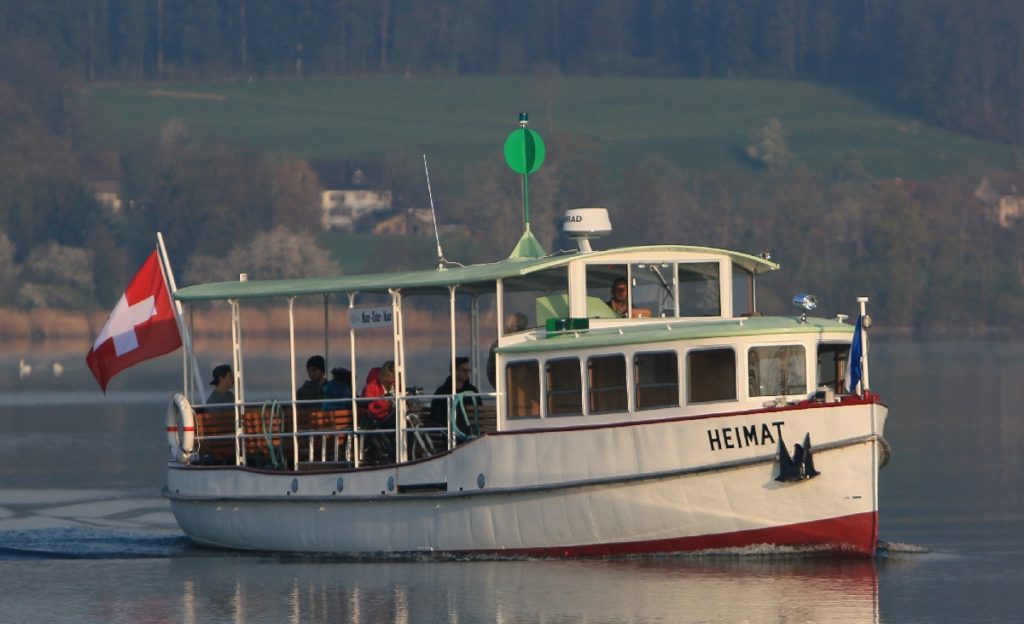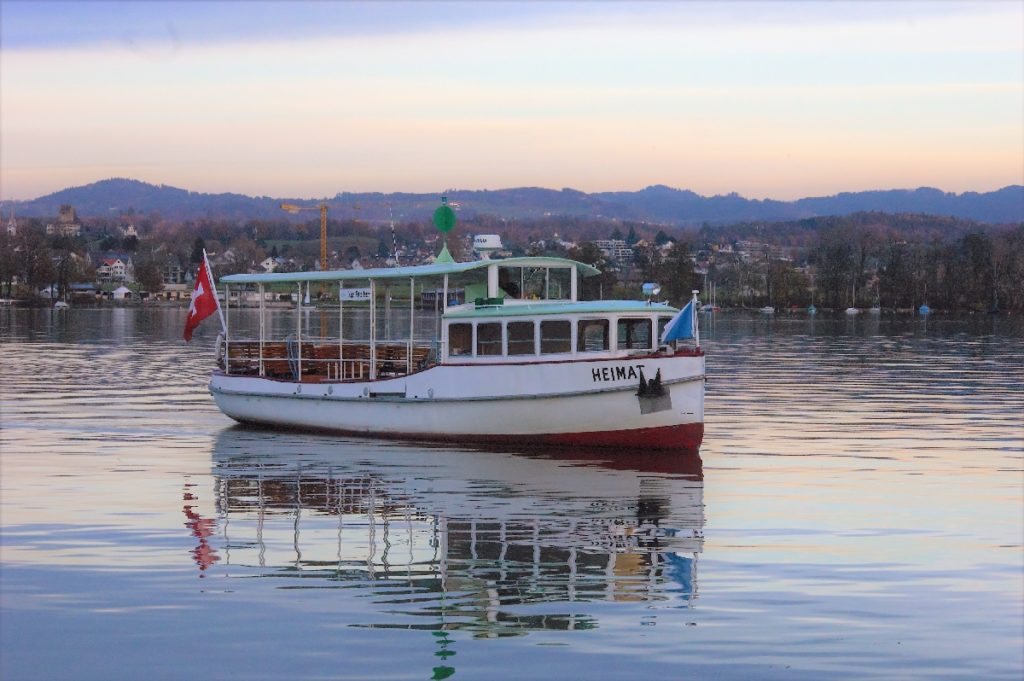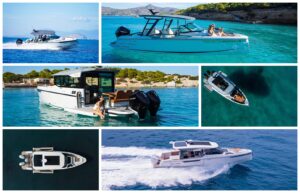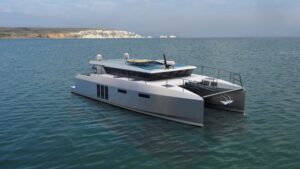ZEM’s marine battery

ZEM’s marine battery
ZEM’s marine battery solutions set sail for Switzerland
Despite its famously landlocked location, this alpine country could prove to be a profitable new region for sales of the Norwegian company’s maritime electric driveline solutions. A historic small passenger ferry on the Greifensee is set to be its first vessel in the German Part of Switzerland to embark upon a sustainable journey away from fossil fuels with ZEM batteries.
ZEM is opening new territories for its battery and electric driveline solutions as it sets out on yet another nautical repowering project – this time, partnering with Shiptec AG following a successful tender for the electrification of the MS HEIMAT. In creating the first sustainably powered passenger vessel for a historic vessel in Switzerland, the project will also be ZEM’s first foray into the region.

Now on to its third diesel engine since it was built in 1933, the Heimat operates all year round, typically making 12 daily trips as it carries up to 60-foot passengers a time crossing the quiet and romantic Greifensee between Maur and Uster, not far from Zürich. SGG – the Greifensee shipping cooperative and owner of the MS HEIMAT – took a rather bold step and wanted to equip the historic vessel with the latest battery technology. They commissioned well-respected Shiptec AG in Luzern to carry out a feasibility study for electrification, scrutinizing various systems proposed by various separate suppliers. Towing tests, as well high dynamic power measurements for propulsion and hotel load were carried out by Shiptec AG to provide information concerning the most suitable dimensions and placement of motor and batteries, likely service life, and an estimate of the likely investment and operating costs.
With the results confirming the viability of such a conversion, and the realization that ZEM had the most experience with such type vessels in the world, SGG signed off on switching the motor launch to fully electric propulsion, potentially reducing CO2 emissions by around 10 tons per year.
To power its typical 20 km or so of daily operation, the ZEM and Shiptec will retrofit the Heimat with a 99 kWh AKAZEM lithium-ion battery system. Already proven in a variety of smaller ships and ferries, including electric lifeboats for the offshore industry and more than 30 hybrid fish-farming vessels, this will provide more than enough power for a normal day’s. While the plan is to charge the batteries 100 % from sustainable sources inclusive upgrades by photovoltaic systems, there is insufficient room on the Maur pier for such an installation and fitting solar panels on the boat’s roof is not possible due to reasons of stability and maintaining its external historical authenticity.
SGG and Shiptec required robust components with a high safety integrity level. “This aligns perfectly with ZEMs values and our system design”, said Sebastian Wang-Hansen, the project leader at ZEM. “Together with Shiptec, we suggested therefore to retrofit the Heimat with a 99 kWh AKAZEM lithium-ion battery system and a 40-kW electric propulsion motor from Danfoss Editron. The permanent magnet motor from Danfoss provides high torque and is, therefore, able to drive the propeller shaft without the need for a reduction gear. This results in a lighter, more efficient, and less maintenance-intensive driveline.

The motor ship has an empty weight of 10.2 t and a transport capacity of 60 people, including 20 passengers in the cabin. The speed required must still be 15 km/h, and the emergency stop must not exceed three and a half ship lengths of 14.9 m. The system, requires 84 kWh of energy per day, including a 10-kWh reserve, this includes 14 round trips over the lake and back, two transfer trips from Maur to Greifensee and back, as well an extra trip in the evening at a lower speed. The ship needs 1.6 kWh to travel one kilometre.
3 batteries of 33 kWh each were selected, giving a total capacity of 99 kWh. This requires recharging during the day. There is a good 30 minutes of reloading time between the hourly round trips. With a charge power of 30 kW, an energy charge of 15 kWh or 15% SOC is possible.
“It would be possible to equip a system with 2 batteries of 33 kWh each. The choice of three batteries enables a higher level of redundancy since if one battery fails, it is still possible to continue driving with two batteries without any limitations. We also expect the batteries to have a longer service life and allow greater flexibility in use on ships. The variant with three batteries appears as an optimization between redundancy, costs and weight”, explained Martin Einsiedler of Shiptec.
“The MS HEIMAT already provided a relatively sustainable public transport solution by removing the need for people to drive all the way, around the southern or the northern edge of the lake to visit either town,” added Dr Allen Fuchs, earlier Chairman of the SGG and now project leader. “But once the project is complete, it will provide a quieter, more environmentally friendly solution in harmony with the Greifensee nature reserve, while preserving the boat’s outward appearance as a historically relevant example of the motorization in the region.” He is also happy, that the Program for Energy Strategy 2050 for the public transportation of the Swiss Federal Office for Transportation, the Fonds of the Canton of Zürich, and the surrounding Communities financially support the project.
Although shipbuilding may not be the first industry that springs to mind when thinking of landlocked Switzerland, the Lake Lucerne Navigation Company (SGV), Shiptec’s parent company, has built ships since 1931. Working out of one of the biggest shipyards in the country, Shiptec provides since 2013 as an independent company a comprehensive range of services from ship design and engineering through to servicing and restoration.
The Heimat project will be the first joint effort between ZEM and Shiptec, and the partners expect that more projects will develop out of this cooperation. There is a rising concern about polluting ship traffic on many of the beautiful alpine lakes in Switzerland, Germany, and Austria. “ZEM can contribute its Nordic maritime expertise to solve these challenges, by making new and modern tourist vessels electric, and by converting the traditional ferries that make the Swiss lakes so unique”, says Jan-Olaf Willums, the Norwegian founder of ZEM, who himself grew up in Switzerland.


